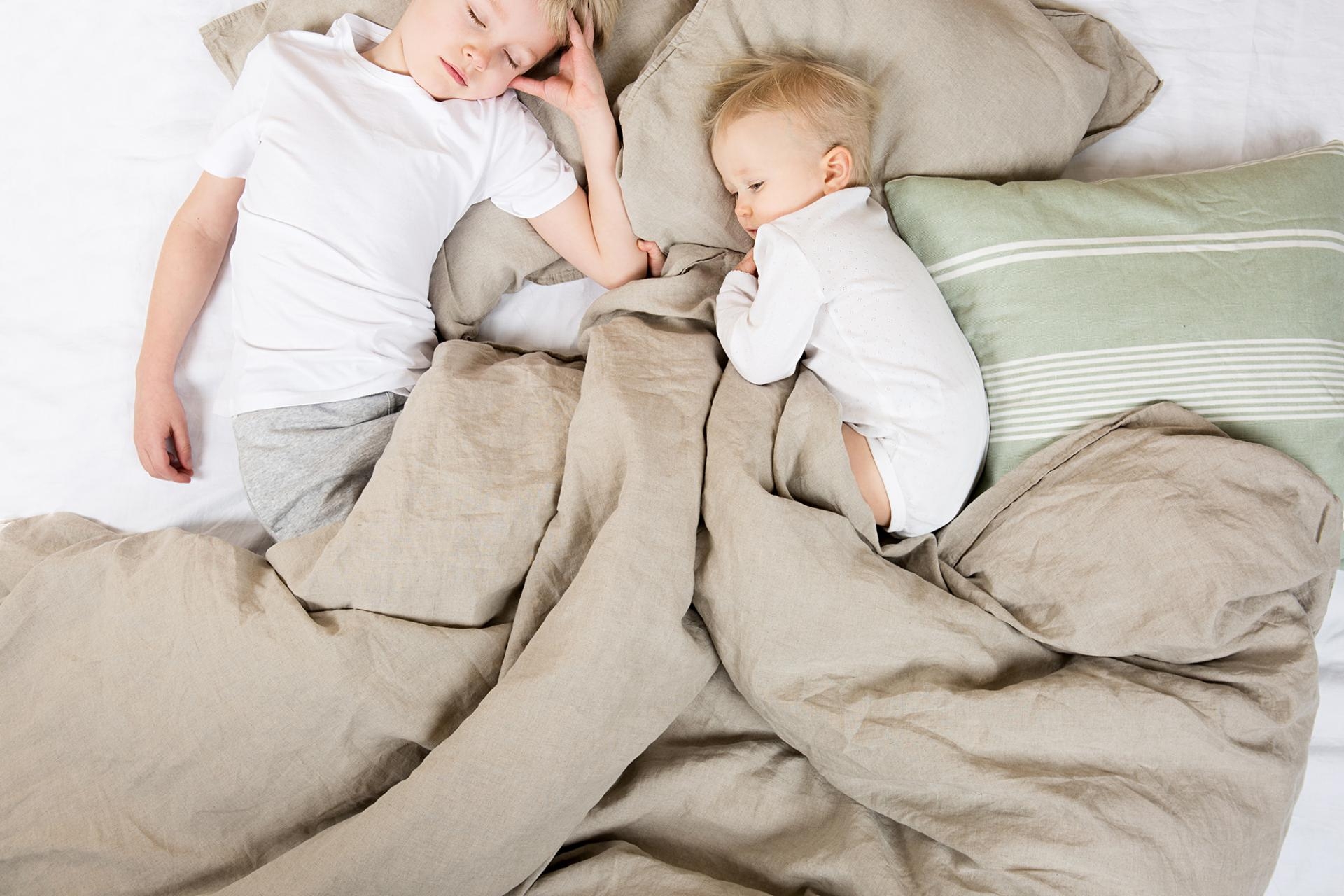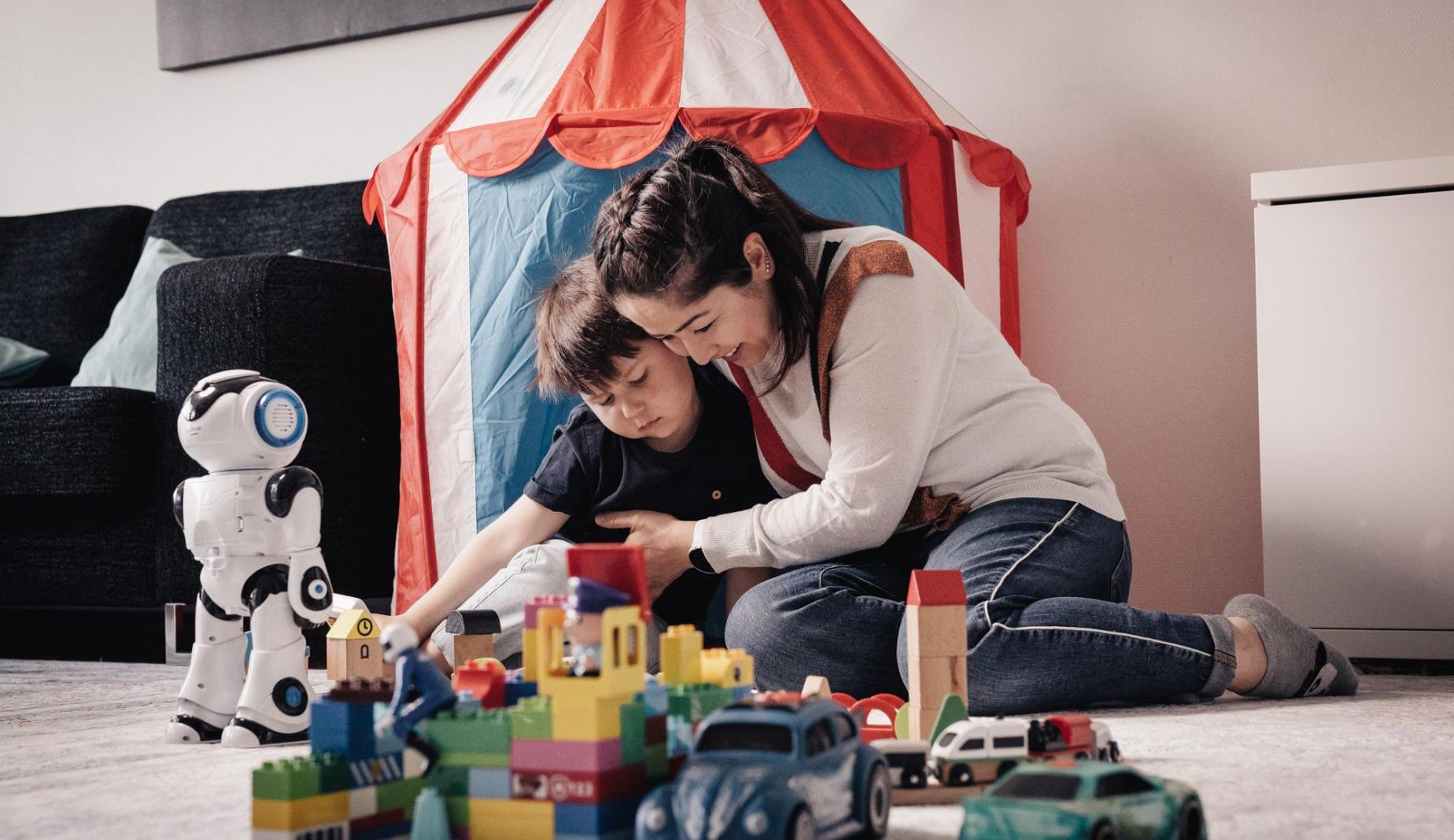
Children's sleep problems are manageable – a pediatrician supports the whole family
Specialist in the article

Revised 10/10/2023
Children's sleep problems can often be treated at home, but sometimes some help from a doctor is needed. It is also important to take care of the parents' coping.
Basic facts about children’s sleep problems
- Various sleeping problems are very common in children.
- If you are concerned about your child's sleep, make an appointment with our paediatrician.
Sleep disorders in children – Children have different sleep problems at different ages
A child's growth and development are often reflected in sleep, which is why different sleep problems are common at different ages.
In infancy:
- Circadian rhythm problems are usually related to infancy. A baby sleeps and is awake at different times than the rest of the family, and the baby who sleeps for long periods during the day may need less sleep during the night than the rest of the family.
- Sleep-onset association disorder is a common sleep disorder in babies. For example, a baby who falls asleep while breastfeeding may get confused when waking up at night in their cot.
- Frequent waking up at night is common in infancy. Natural waking up at night can become a problem for parents when the baby is unable to fall back asleep.
In older children:
- Delay in falling asleep is often the result of a changed need for sleep or a hectic life. In this case, the child does not feel sleepy when it is time to go to sleep.
- Nightmares can bother day care-aged children as well as schoolchildren.
- In sleep terrors, the child cries in fear and appears to be awake. The child may also be talking and moving. In reality, the child is asleep and will have no memory of what happened in the morning.
- Sleepwalking is typical for toddlers and preschoolers.
In general, sleep problems are not harmful to the child, but they can make it difficult for parents to sleep and challenge the well-being and coping of the whole family.
If you are concerned about the well-being of the child or family, please consult our empathetic paediatricians. They can rule out any underlying health causes of the sleep disorder and help solve the child's sleep problems.
Is insomnia in children possible?
Children do not suffer from the same type of insomnia as adults. Babies and small children take the sleep they need in one way or another. School-aged children may sometimes have concerns and stress that can interfere with sleep.
If the child is exceptionally tired and not getting enough sleep, it is a good idea to bring the child to the doctor to clarify the situation.
Children's sleep problems – many causes
A child's sleep problems can be caused by many different factors:
- A child's growth and development are often reflected in sleep. For example, a baby who has just learned to crawl may practice the new skill in their sleep. In addition, the need for sleep decreases with age. It may lead to troubles falling asleep in the evening.
- Sickness of the child and pain can cause disturbances in sleep. For example, respiratory tract problems are easily reflected in sleep; snoring and sleep apnoea can also occur in children.
- A busy lifestyle and stress can make it difficult for a child to sleep. Psychological factors, such as worries, changes in life situation and anxiety, can also be reflected especially in the sleep of a schoolchildren.
Children's sleep disorders – 8 home remedies when it is difficult for a child to sleep
Calming down the bedtime and keeping a positive mood create good prerequisites for falling asleep and staying asleep. Repeated evening routines signal a shift from daytime activities to sleep time to a small child.
Sleep schools can be used to help reduce the number of waking up at night for babies over the age of six months. In a Tassutus (patting) sleep school method, a baby crying at night is soothed by holding a hand on the baby's back or rubbing until the baby calms down. The baby will not be picked up or given milk at night, and gradually the time spent next to the baby will be reduced. The idea is to get your baby used to falling asleep on their own bed with as little help as possible.
Reducing naps helps when it is difficult to fall asleep at night due to the child's changed need for sleep.
Delaying going to sleep at night is recommended when the child no longer sleeps during the day and does not get tired at bedtime due to a decrease in the need for sleep.
Calming down the rhythm of life can work if the family's life is very busy and there are a lot of activities. Mobile phones and other smart devices should be put aside early in the evening.
Calming the child and making sure that the child does not harm themselves during nightmares, sleep terrors and sleepwalking helps the child to get back to normal sleep. The child should not be woken up during a sleep terror or sleepwalking. These situations are harmless to the child, as long as the child does not hurt themselves when moving around.
It is important to take care of the parents' coping. Waking up at night is common for babies under the age of six months, and the baby can only be supported in finding a better sleep rhythm with small measures. Try alternating childcare responsibilities at night, if possible.
Consult a doctor at a low threshold if you are concerned about your child's or family's well-being and coping.
Prices for appointments with specialists, such as gynaecologists, dermatologists, cardiologists, orthopaedists and ophthalmologists, can be found in our appointment booking service.
| Service | Price estimate |
|---|---|
| Appointment with a specialist, 20 min Price per appointment. | from 99,80 € Without Kela reimbursement from 129,80 € |
| Appointment with a specialist, 30 min Price per appointment. | from 114,80 € Without Kela reimbursement from 144,80 € |
| Appointment with a specialist, 45 min Price per appointment. | from 142,80 € Without Kela reimbursement from 172,80 € |
| Gynaecologist's appointment, 20 min | from 69,80 € Without Kela reimbursement from 139,80 € |
| Gynaecologist's appointment, 30 min | from 74,80 € Without Kela reimbursement from 144,80 € |
| Dermatologist's appointment, 20 min | from 117,70 € Without Kela reimbursement from 147,70 € |
| Dermatologist's appointment, 30 min | from 127,80 € Without Kela reimbursement from 157,80 € |
| ENT doctor's appointment, 20 min | from 112,80 € Without Kela reimbursement from 142,80 € |
| ENT doctor's appointment, 30 min | from 133,80 € Without Kela reimbursement from 163,80 € |
| Paediatrician's appointment, 20 min | from 115,20 € Without Kela reimbursement from 145,20 € |
| Paediatrician's appointment, 30 min | from 134,80 € Without Kela reimbursement from 164,80 € |
| Orthopaedist's appointment, 20 min | from 111,80 € Without Kela reimbursement from 141,80 € |
| Orthopaedist's appointment, 30 min | from 133,80 € Without Kela reimbursement from 163,80 € |
| Appointment with a psychiatrist, 45 min Price per appointment. | from 109,80 € Without Kela reimbursement from 159,80 € |
| Appointment with a psychiatrist, 60 min Price per appointment. | from 120,80 € Without Kela reimbursement from 180,80 € |
| Ophthalmologist's appointment, 30 min | from 127,80 € Without Kela reimbursement from 157,80 € |
| Ophthalmologist's appointment, 45 min | from 138,80 € Without Kela reimbursement from 168,80 € |
Related symptoms
Ear infection in children and babies
Fever in children – our doctor can help if home remedies do not work or the fever persists
Hand, foot and mouth disease in children
Head lice – if getting rid of head lice is not possible at home, you can seek help from a doctor
Looking to get rid of pinworms? If eradication is not successful, our doctor will help
Meningitis in children and babies—how to recognise alarming symptoms
Mononucleosis – uncomfortable symptoms and fatigue can make life difficult for a long time
Other related services
Dental check-up for children and young people
Specialist dental check-up visit for children and adolescents.
Paediatric physiotherapy
Rehabilitation provided by a physiotherapist that aims to promote the child's functional capacity and mobility.
Vaccinations for babies and children – Frequently asked questions
Frequently asked questions about sleep problems in children
The need for sleep depends on the person, and therefore precise recommendations cannot be given. If it is easy to fall asleep and the child is alert when they wake up in the morning, they are likely to get enough sleep.
This is how does a child's need for sleep varies at different ages:
- A baby can sleep well over half of the day or almost all the time during the first months of life.
- The need for sleep of a toddler is usually 11–13 hours a day.
- As a rule, the need for sleep of a 9-year-old is at least 10 hours, often more.
Parents sometimes talk about sleep regression, or sleep deprivation, when referring to a situation in which a child who has previously slept well begins to sleep poorly.
Such a change in sleep is usually associated with the development of the child. As the child learns new skills and their thinking develops, the changes are easily reflected in the sleep.
The situation is common in babies around 4 and 8 months of age as well as in children 2 years of age, but it can also occur at other stages.
In a child, the stages of sleep change faster than in adults. The child moves when dreaming, and it may appear to the parent as restless sleep.
A child's restless sleep can make the parent wonder if the child gets enough rest during sleep. The worry is usually unnecessary. The child will get the amount of sleep they need if they wake up refreshed in the morning.
The night waking problems of a six-month-old baby can be addressed at home with the help of a gentle Tassutus sleep school. As a result of the sleep school, the baby learns to fall back asleep on their own when the child wakes up at night.
In the Tassutus sleeping school, the baby is taught to fall asleep on their own. If the baby cries at bedtime and the crying does not stop on its own, the parents can calm the baby down by patting, that is, stroking the baby's back or holding a hand on the back of the baby. When the baby wakes up during the night, the patting can be repeated.
The purpose of patting is only to calm the child. Therefore, it is important that the baby does not fall asleep while being patted. The parent must step aside or leave the room before the baby falls asleep.
It is not necessary to react immediately to the baby's crying – sometimes it is good to hear if the baby would calm down on their own. It is important that you remain calm and assess when the baby's crying is such that the baby needs the support of the parent in the situation.
Typical sleep problems in schoolchildren include, for example, delayed sleep, nightmares, sleep terrors and sleepwalking. Changes in life situation, stress and worries may affect the sleep of a schoolchildren.
A child's sleep terror is a harmless situation for the child, but easily worries the parents.
In a sleep terror, the child usually wakes up an hour or a couple of hours after falling asleep and cries in terror. The child is not awake, although it may seem so.
It is important for a parent to remain peaceful, calm the child and make sure that the child does not harm themselves. The situation is usually over fairly quickly and the child falls asleep again. In the morning, the child has no memory of what happened.


